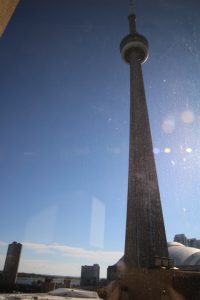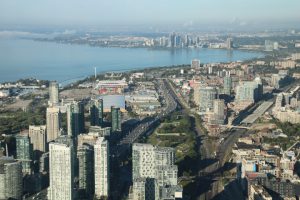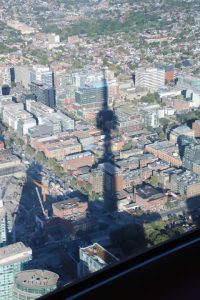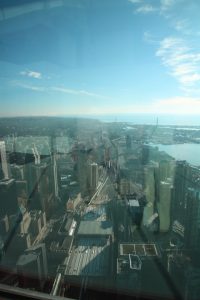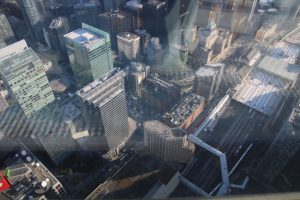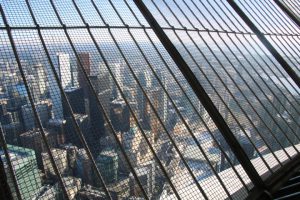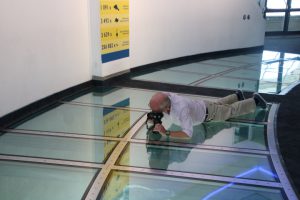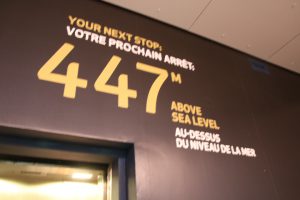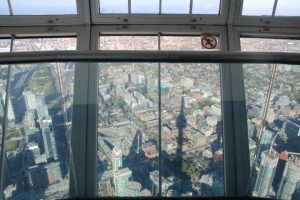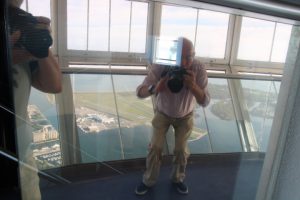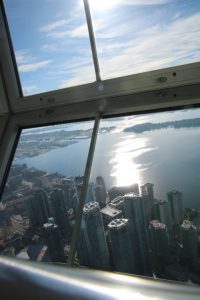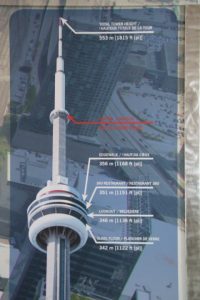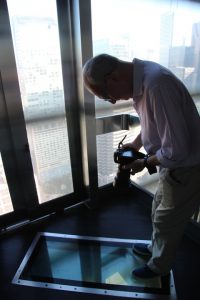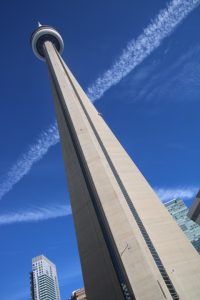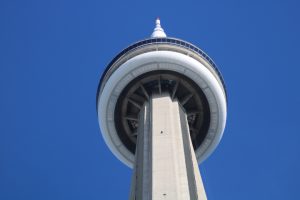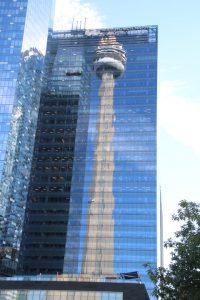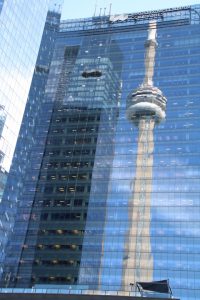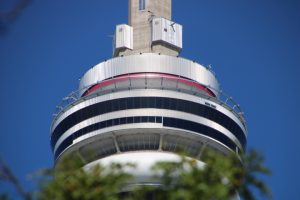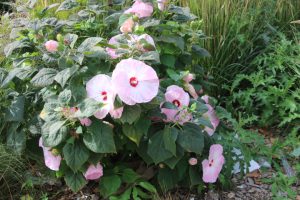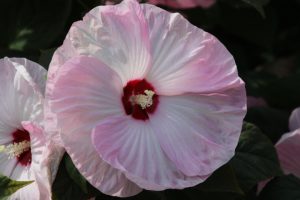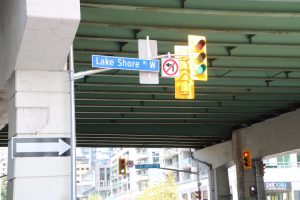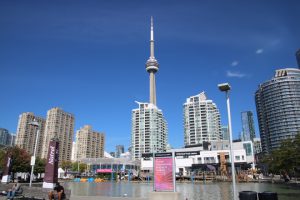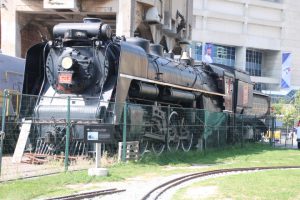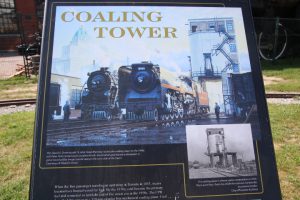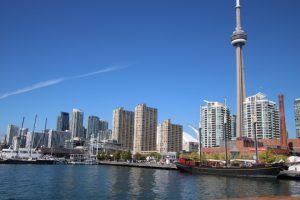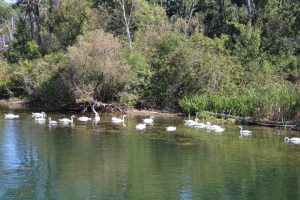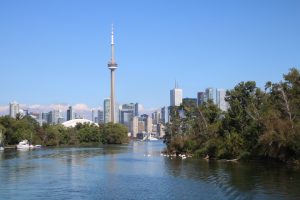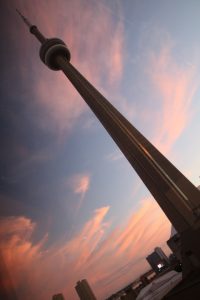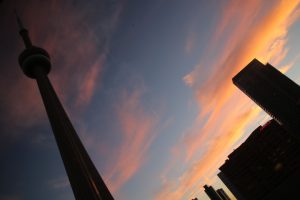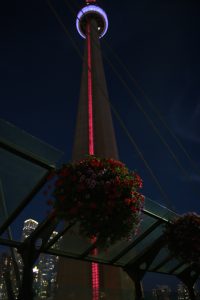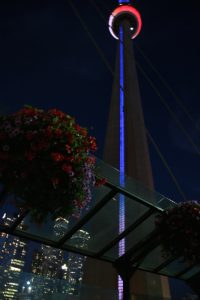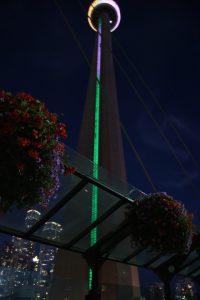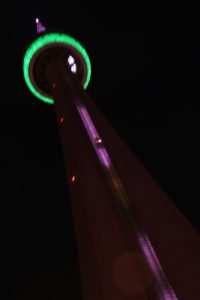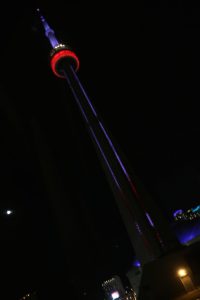We made a record today by being at the front of the line for the opening of the day’s tours of the CN Tower. Built in 1976 on the former railway lands that supported the industries of Toronto, the CN Tower is named after the railway company that built it. It is a legacy of the analogue age as it was built to send television signals across the country and had to be of an amazing height to allow the signals to pass over the second largest country in the world and its mountains. It stands at 553.3m high and for 32 years, since its construction, was the world’s tallest free-standing structure. It still is, but west of Greenwich. It was overtaken by the Burj Khalifa Tower in Dubai in 2009.
We ascended the tower to the Observation Deck at 346m and afterwards visited the outdoor Observation Deck at 342m. The latter has the original glass floor which gives an amazing view down the leg of the tower. There is another glass floor on the upper level but a member of the team does not think this is as good!
Later we ascended to the Sky Pod at 447m. Above us is the telecommunication tower. In 1978, a member of the team used a film entitled “To the Top” which showed the construction of the tower and in particular, the sole construction worker more than 500m above the ground bolting on the last piece of the tower which was swinging from a helicopter that had lifted it from the ground.
The whole area around the tower has been tastefully landscaped and the industrial/railway heritage used to good effect. The tower may be a structure from the past but as an attraction it is outstanding.
We moved to the waterfront which today is new property built upon reclaimed land. Our hotel, for example, is on Front Street which is three blocks inland from the water but in the 19th century the waterfront was nearly two blocks further back.
On our first visit to Toronto the locomotive shed, or Roundhouse, and the carriage sidings occupied a lot of the land. Today this is a museum and the home of the Steamwhistle Brewery.
An early afternoon cruise took us around the harbour. The islands in the harbour were originally a giant spit of sand extending into Lake Ontario, but because these lakes are so big and act like seas, a giant storm in the 19th century broke the spit into many islands. Toronto took advantage of this and opened up the harbour and new islands for living and tourism.
An interesting fact from our cruise was that surface water from the lake is treated for daily use and water from the lake’s depths is used throughout the year for cooling and heating in winter for infrastructure in the city’s buildings.
As we write the sun is falling and we may be outside for a light show later.
